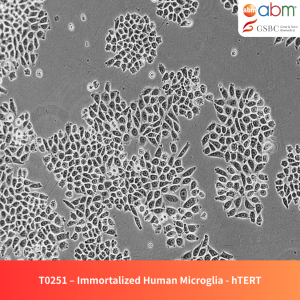Product Details
- Catalog Number: T0292
- Unit Size: 1 x 10⁶ cells / 1.0 mL
- Species: Human (Homo sapiens)
- Tissue: Nerve (sciatic nerve)
- Cell Type: Immortalized endoneurial endothelial cells
- Growth Properties: Adherent, spindle-shaped
- Expression marker: GLUT-1, P-gp, γ-GT, LAT-1, CRT, MCT-1
- Biosafety Level: BSL-2
- Storage: Vapor phase of liquid nitrogen or below -130°C
- Shipping: Shipped on dry ice
- Format: Cryopreserved frozen cells
Overview
Immortalized Human Endoneurial Endothelial Cells (THEndEC) are a valuable tool for research on blood-nerve barrier (BNB) permeability and receptor-mediated drug transport. Derived from human sciatic nerve tissue, these cells retain crucial transporter proteins (e.g., P-gp, γ-GT, LAT-1) and barrier properties similar to primary endoneurial endothelial cells, making them highly suitable for peripheral nerve research and drug toxicity studies.
These cells demonstrate transendothelial electrical resistance (TEER) and controlled permeability to fluoresceinated sodium and dextran. Their specific binding to UEA-1 lectin and the uptake of Dil-Ac-LDL indicate their functional scavenger receptor and α-L-fucose expression capabilities.
Key Features and Benefits
- Reproducible In Vitro Model: Maintains specialized transporter expression and restrictive barrier function for reliable BNB research.
- Ideal for Drug Permeability Studies: Enables kinetic studies on drug transport and intoxication research.
- Specific Marker Expression: Demonstrates UEA-1 lectin binding and Dil-Ac-LDL uptake for specialized receptor function analysis.
- Long-Term Culture Viability: Immortalized to ensure extended research periods without senescence.
- Optimized Growth Protocols: Compatible with PriCoat™ ECM flasks and specific media supplements for enhanced growth.
Culture & Handling Guidelines
Recommended Culture Conditions
- Coating: PriCoat™ ECM T25 Flasks (G999) or Applied Cell Extracellular Matrix (G422) for optimal adhesion.
- Growth Medium: PriGrow II (TM002) supplemented with:
- 10% FBS
- 1 ng/mL rhFGF2 (Z101455)
- 10 U/mL Heparin (Sigma, H3149)
- 50 µg/mL Endothelial Cell Growth Supplement (TM130)
- 1% Penicillin/Streptomycin (G255)
- Incubation Conditions: Maintain at 37°C in a humidified atmosphere with 5% CO₂.
- Seeding Density: 20,000 – 40,000 cells/cm²
- Doubling Time: 28 – 53 hours
Thawing Protocol
- Quickly thaw cells in a 37°C water bath for no more than 2 minutes.
- Decontaminate the vial by spraying with 70% ethanol.
- Transfer the cell suspension to a sterile 15 mL conical tube containing 5 mL of pre-warmed growth medium.
- Centrifuge at 125xg for 5–7 minutes.
- Aspirate the supernatant and re-suspend the cell pellet in fresh growth medium.
- Seed the cells into a pre-coated T25 flask and incubate under the recommended conditions.
Cryopreservation Guidelines
- Use Cryopreservation Medium (TM024) or complete growth medium supplemented with 10% DMSO.
- Freeze at a controlled rate (-1°C per minute) before transferring to liquid nitrogen storage.
Related Products
- Recombinant Human VEGF (121aa) – Z102115
- Recombinant Human TGF Beta-1 – Z101555
- Recombinant Human IL6 (E. coli) – Z100555
- Recombinant Human IL1B (E. coli) – Z100395
Disclaimer
- This product is for research use only and not intended for therapeutic, diagnostic, or clinical applications.
- The buyer assumes all responsibility for ensuring suitability for their specific applications and conditions.
- Variations in performance may occur depending on experimental conditions.
- All results should be properly cited in scientific publications.
- This product is subject to a Material Transfer Agreement (MTA). Contact technical support for inquiries.
References
- Yosef, Nejla, Robin H. Xia, and Eroboghene E. Ubogu. “Development and characterization of a novel human in vitro blood-nerve barrier model using primary endoneurial endothelial cells.” Journal of Neuropathology & Experimental Neurology 69.1 (2010): 82-97.



